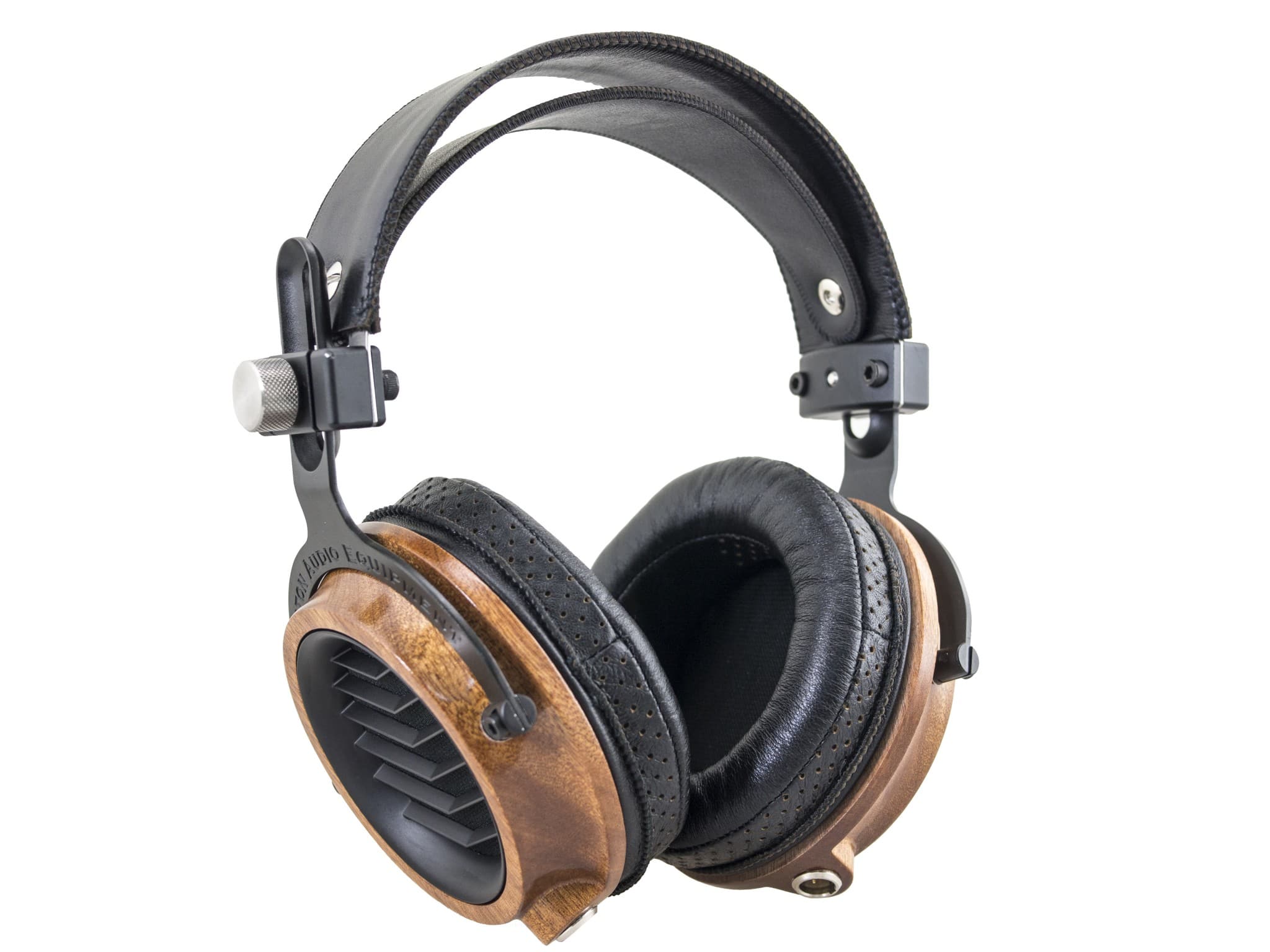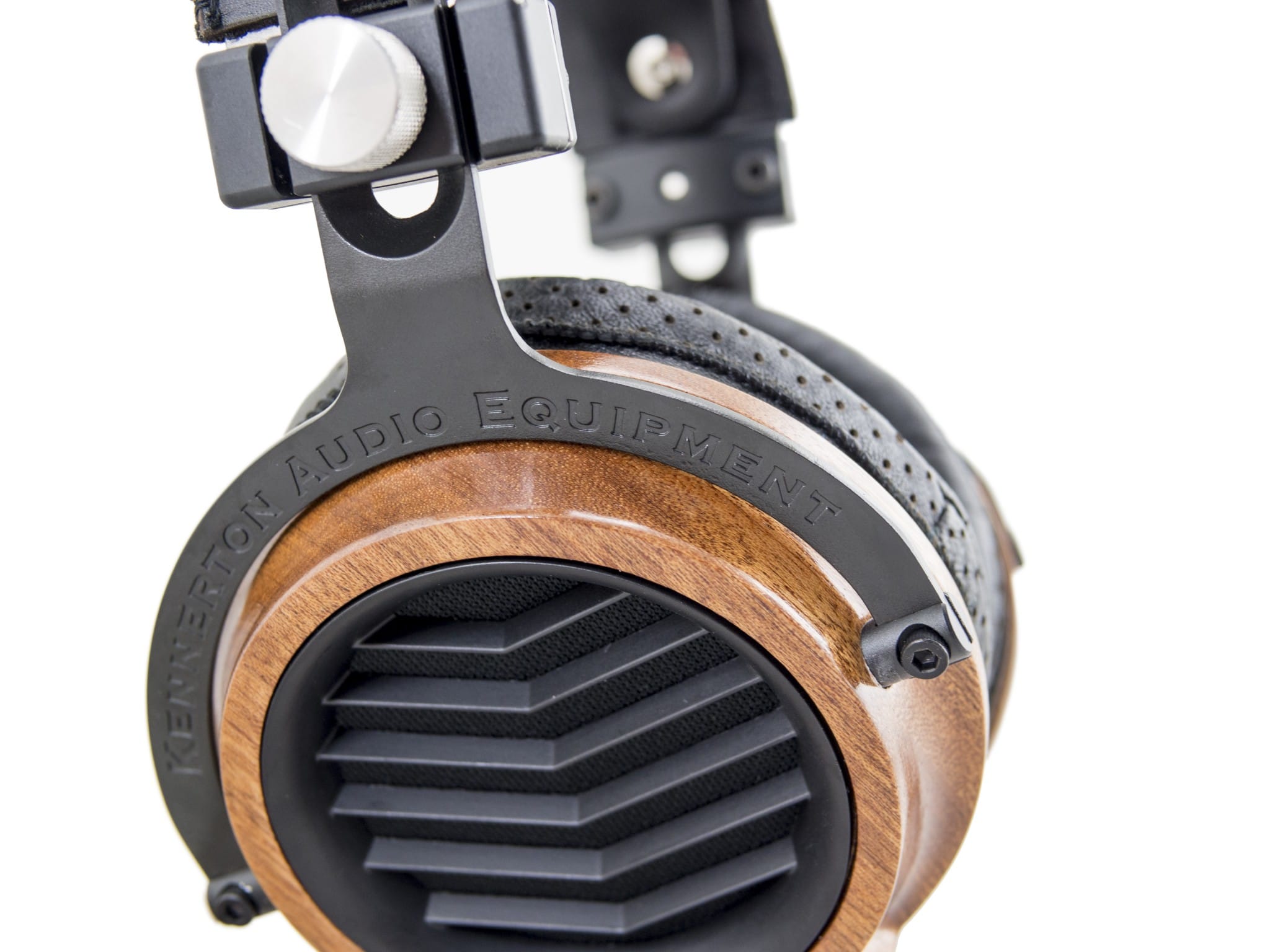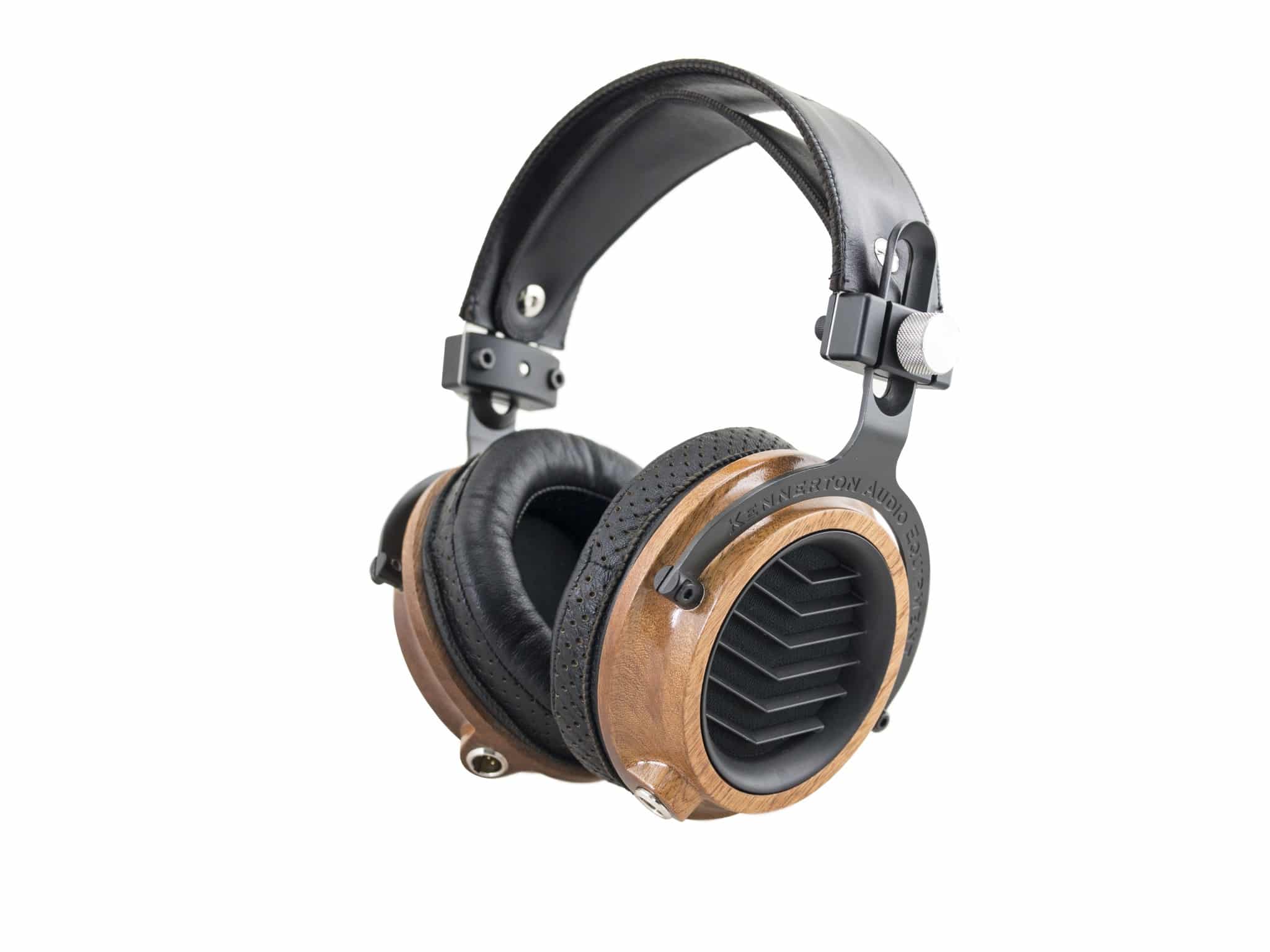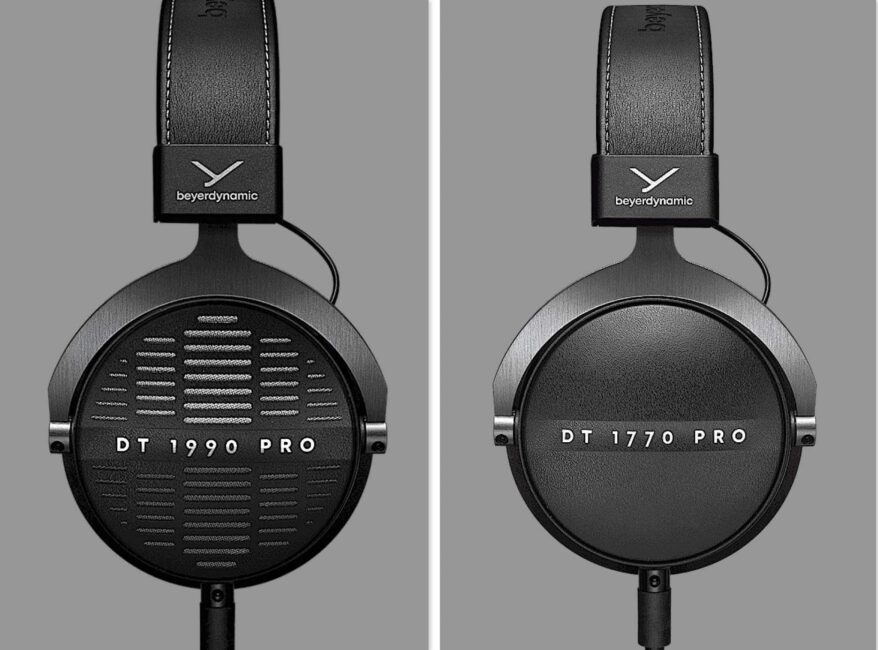The Article
Kennerton Odin headphones: Did They Go To Planar?
30th October 2016

Kennerton’s top-of-the-range model, supporting Planar Magnetic technology, Paul Rigby reviews the Odin headphones
These things are big. They’re heavy. It’s almost like wearing a sculpture on your head. They’re headphones for butch men who also wear jackets made from solid oak, jeans from Titanium and socks made from stainless steel. They’re used by humming luberjacks who have them hooked up to Krell amps that they keep in their back pockets while they chop massive trees down with one hand, by SAS forces entering occupied foreign embassies killing terrorists to the beat of the bass and, finally, by my mother-in-law. They’re for eco-friendly audiophiles who don’t realise what they’re getting themselves into and certainly not seven stone weaklings who will be flattened to the ground by these earphones in the same way that stepping from your spaceship onto a high gravity planet would pin you to the sand.
Are you getting the message? This is a set of headphones made from wood. From aluminium. From steel. If there is any trace of plastic within any of these headphones then I would imagine that the rogue pair would be marched outside into the yard and shot.
I did get used to the fit of the Odins over time but it took effort and that time to do so. The Odins are not an immediate luxurious experience. You feel, like a pair of army boots (but without infusing them with urine…look it up), you have to suffer a bit with the Odins before your head accepts them like a comfy hat (even if that hat feels like a Pith Helmet).
These Russian-made (why am I not surprised?), high efficiency, Planar Magnetic headphones utilises semi-circular neodymium magnets with a polyamide film diaphragm to better cope with environmental conditions. My review sample arrived with the small 3.5mm headphone connector with a larger, 6.35mm adaptor fitted to the end. Head fit was enhanced with a left and right knurled knob that allowed fine vertical adjustment of the chassis while the ear pads could also be rotated to the same purpose. The removable mini-DIN terminated cables arrived in a tin that sat within a very silly wooden box that is a brilliant retail display but is useless for anything else because, once opened, the wooden lid sits on the top of the box without any fixative fastener.
SOUND QUALITY
To begin, I played the Nat ‘King’ Cole’s classic hit single, on vinyl, Let There Be Love. A smooth stylish song from a smooth and stylish man with one of the most delicious instrumental introductions of any song in history.
What hit me immediately with the Odins was the incisive nature of the mids that brought the drums and especially the cymbals right up to the ear, giving you a close up survey of the delicate work underway. The cymbals shimmered and reflected the metallic nature of the instruments effectively. That said, when the piano followed quickly, there was a notably clinical aspect to the upper midrange during the many piano note crescendos. Or was there? I began to wonder if these headphones had been thoroughly run in or, alternatively, if they stiffened up if not played regularly. That seemed to be the case. To begin, it was almost as if the record had been EQd with too much compression. After a while, though, the Odins softened up and became much less aggressive. Hence, despite being properly run-in, the Odins seemed to harden quite dramatically again if not used for a little while, requiring a mini-run in all over again. If you purchase the Odins and do not use them for a few weeks at a time, for example, then I would recommend a half hour run-in before you use them in anger, therefore.
Despite the run-in, there was still a slight spotlight shown on the upper mids, not bright or clinical this time, more a slight spotlight that was a tad, just a touch, too much for my liking on jazz tracks (I also tried a bit of Sonny Rollins here and a little bit of Bach there, to prove the point).
One area that I was very impressed with was the Odin’s ability to dig deep into the normally shy background strings which exposed more detail than normal. On other headphones, the string section can often resemble an amorphous entity. As if one person is playing the entire sweeping mass. Not here, the Odins added new character and an acute nature to the orchestra.
Moving down the scale, the double bass offered a rhythmic and glossy lower frequency nature. The bass bounced gently but firmly throughout the track giving the music a gentle drive.
For some listeners, of course, the Odins will not be used for jazz or classical. Maybe they prefer something with muscle? I turned to prog rock and Camel’s Moonmadness and Song Within A Song.
Again I was impressed by the incisive nature of the midrange with the treble-infused cymbals ringing out loud and clear. The multi-tracked vocal was beautifully detailed with the harmonic whole revealing its component parts that provided a rich and complex presentation.
There is a mid-point instrumental sequence that is drenched with vintage synth noises. The warming sounds from this sequence plus the rhythm guitar and drums were quite delightful in terms of the clarity and transparency that was infused within and around this sequence. Toes tapped, head proceeded to nod and knees unfurled. The Odin thrived on energy and drive and…rocked!
CAN’T ADAPT, WON’T ADAPT
I was concerned, though. My concern is that I had been supplied with an Odin cable, by Kennerton, which featured the smaller 3.5mm termination and the only method of connecting it to my audiophile headphone amplifier was to use the included 6.35mm termination adaptor.
This is important because I am convinced that the adaptor is a detriment to the sound quality and may even have been affecting my final sonic conclusions. You are, after all, placing an additional layer of hardware in between you and the music. Evidence was secured by placing a similar adaptor on a pair of Sennheiser HD800s and listening to Nat ‘King’ Cole’s Love via vinyl. Without the adaptor, the soundstage opened up, there was far more space and air around the vocals and brass output, reverb tails appeared all over the place and so on. Why my top-of-the-range Odins should be supplied with a 3.5mm termination – a socket size normally associated with lower cost and lower quality mobile-friendly headphone amplifiers – and not the full size kit is beyond me when the full size socket is allied to home hi-fi audiophile gear, exactly the sort of hi-fi that you would expect to utilise with the Odins.
I then hooked up the Odins to my Chord Mojo and, via similar adaptors, connected it to my SSD-powered MacBook and played a slice of 24bit/96kHz blues through Audirvana Plus. Playing Harry ‘Big Daddy’ Hypolite, an old blues shouter plus his guitar and nothing else, without the adaptor, the bass was fuller – even via a meagre acoustic guitar! – while the vocal delivery sounded as if it was coming straight from the big lungs of this big man, instead of through a tea strainer first. More than that, the soundstage was large in both height and breadth and the space and air grew immeasurably. And this from the little Chord Mojo? The proof of the sonically veiling cable adaptor was there, though.
CONCLUSION
In general terms, in the nicest possible way, the Odins are most definitely ‘in yer face’ or, if you want to take it from the other direction, utilising the Odins sounds like you have stepped right up to the edge of the stage. There, about a foot away, is the guitar and don’t turn your head too fast, you might be clonked on the noggin by a drum stick. That style is the first thing you need to confront and decide upon. Other headphones allow you to step back and see the bigger picture, the Odins put you right into the action.
For jazz, which (in very general terms) is a group of individuals playing together, this can be an issue in terms of being a bit too forensic in terms of just how closely certain instruments are tracked. For rock (in general terms multiple components of the whole) that is never an issue because you are always hearing one instrument infused, blended or infected with another. That is, the critical quality of each instrument is lessened slightly. More than most headphones out there, I believe that a demo is very important to make up your mind. Take your time, though, and don’t rush your decision.
That said, though, do not, what ever you do, use these headphones via a cable socket adaptor. At this moment in time, that means not using the Odins with audiophile hi-fi equipment made to power these expensive headphones but using it with headphone adaptors sporting 3.5mm sockets only.
KENNERTON ODIN HEADPHONES
Price: £2,195
Web: www.nunudistribution.co.uk
Tel: 0203 5442338
For more specs and further technology explanations, click HERE
FOR: detail, midrange insight, rock-centric, action oriented
BAD: slightly clinical for some ears, cumbersome fit, cable termination
RATING: 7
NOTE: After the review had been completed and in response to my queries, I received this response from Kennerton: “ About the Odin’s cable… before it was supplied with a 3.5mm jack plug plus 1/4″ adaptor. But now the main part of Odins come with a cable with 1/4″ jack plug. And if the customer wants to order the Odin (as well as Vali) with a 3.5mm jack plug or balanced XLR plug – we do it. So, the cables are supplied as now per customer request.”
This is great news for the prospective customer and, hopefully, solves any concerns listed above. I hope to provide an upgrade to the above review in the future, just to make sure.
REFERENCE SYSTEM
Origin Live Sovereign Turntable
Origin Live 12” Enterprise arm
Transfiguration Proteus cartridge
Aesthetix Calypso pre-amplifier
Icon Audio MB845 Mk.II monoblock amplifiers
Quad ESL-57 speakers with One Thing upgrade
Sennheiser HD800 headphones
Icon Audio HP8 Mk.II headphone amplifier
Vertex AQ & Tellurium Q cables





With so much in the way of big money luxury items in the bizz,, are there any units sold numbers?